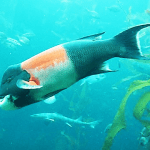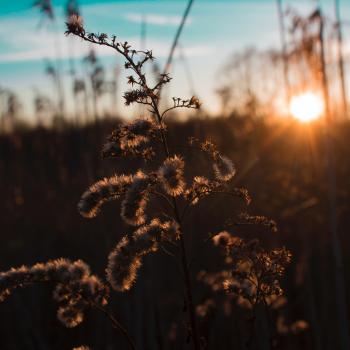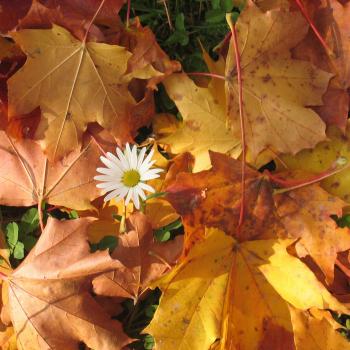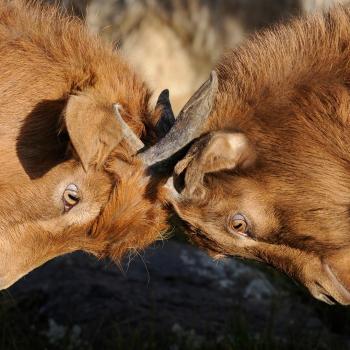On Friday, November 11, 2011, the winners of the New Seven Wonders of Nature campaign were announced after a four-year process that spanned more than 220 countries and included more than four hundred sites nominated for their ecological significance, historical legacy, diversity and natural beauty.
New7Wonders, the Swiss foundation that coordinated the global campaign, works to raise awareness, encourage social and environmental sustainability, and promote global participation in the conservation of cultural legacies and ecological marvels all over the world. Among the seven winners are places of astounding beauty and environmental importance, including the Amazon Rainforest in South America, Komodo National Park in Indonesia, Ha Long Bay in Vietnam and Table Mountain in South Africa. All seven winning sites, as well as many others that made the short-list earlier in the voting process, hope to see an increase in tourism and support for conservation efforts thanks to their involvement in the campaign.
But for many of us, traveling the world to witness the wonders of nature is just not in the cards. Our lives are busy and our bank accounts are tight. Luckily, the wonders of the natural world aren’t just found in exotic locations and untouched wildernesses. They’re all around us, unfolding quietly in abandoned city lots and busy school playgrounds, even in our own backyards. If we take a moment to look carefully, we’ll discover that there are wonders of nature everywhere. Here are seven that leave me awe-struck every time. What fills you with wonder?
1. Balance
Ha Long Bay, Vietnam – Karst limestone thrusts out of the ocean near the coastline of Vietnam, creating more than 3,000 jungle-topped islands, many of which loom in towers between 50 and 100 meters tall. The site’s unique blend of tropical forest and marine coastal ecosystems provides a home for a wide variety of plants and animals, while its geological history has produced impressive limestone formations such as the carefully balanced Kissing Rocks.
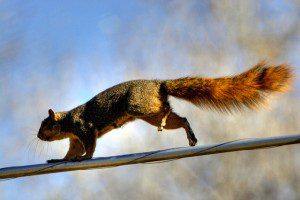
A squirrel perches on a telephone wire across the street, swinging precariously in the stiff breeze that moves the window shutters to groan against the side of the house. My cat’s tail twitches excitedly from side to side where he sits otherwise motionless on the narrow windowsill, wide eyes watching. I sit still as well, taking in the whole scene for a moment, marveling at the poise and grace of each animal. A sudden loud creak from the wind makes me jump and brings me back to myself, laughing when I realize that just like the cat and the squirrel, I had also been caught up in the precarious balance of the moment.
The balance of nature is not simply the careful weighing of good versus bad or right versus wrong that can be pinned down and perfected. Balance is a dynamic process of give and take that is always on-going, responsive to the moment. Species vie for food, shelter and mates in a dance of life, death, decay and new growth. For instance, in the forested mountains of Pennsylvania, too few natural predators means that the deer population will swell, food will grow scarcer as the cold months approach, and starvation and disease will rise until the number of deer shrink again and balance is restored. Whether this is good or bad depends on your perspective: are you a buck, a wolf, a human hunter? Are you a driver navigating dark roads at night worried about what animals might suddenly leap into your path? Or a tree in the woods whose bark might be stripped too far back by hungry deer? Each of us plays our own role in the balance of the natural world. Like the squirrel on the telephone wire, an ecosystem’s natural balance is maintained by myriad tiny adjustments and instinctive responses to the shifting currents of change.
2. Diversity
The Amazon Rainforest, South America – Spanning nearly six million kilometers (and nine nations) in the Amazon Basin, this tropical jungle is the largest and most species-rich rainforest in the world. One in ten of all known living species of plants and animals makes its home in the Amazon.
Squirrels aren’t the only visitors I can see from my window. Even though I live in a bustling urban center, my small backyard provides shelter to a startling variety of plants and animals. My tiny four-by-four foot vegetable and herb garden attracts rabbits, jays, crows and chipmunks, while the long stalks of wildflowers and weeds growing up along the fence are a popular perch for cardinals, sparrows, butterflies, bees, wasps and a variety of beetles, not to mention providing an excellent hiding place for mice and voles. The neighbor’s mulberry tree drapes across into my driveway, where its fruit feeds robins, chickadees, finches and, if too many berries have been squished underfoot, swarms of flies. And of course, there are the neighborhood cats always on the prowl, and the occasional raccoon sneaking around the trash cans in the alleyways at night.
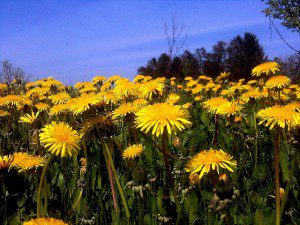
Even among manicured lawns and carefully landscaped shrubbery, the wonder of wildly diverse nature is everywhere. Animals and plants of all kinds have adapted and learned to live alongside human beings in the suburbs and cities as well as in the wilderness of forests and the vast stretches of farmland. Much of this diversity is hidden from us: the microorganisms that live in our air and water; the bacteria, insects and other tiny creatures that revel in the rotting organic matter of the garden compost heap; the stubborn dandelions that we overlook as “just weeds” pushing their way up through the cracks in the sidewalk. Sometimes all it takes to see the true diversity of nature is to step outside, breathe deeply and allow your eyes to take in all of the bustling life around you.
3. Depth
Jeju Island, South Korea – The islands of Jejudo are covered in forest wilderness that remained untouched and unexplored by human beings until the 21st century. Dominated by a dormant volcano 6,400 feet high surrounded by more than three hundred smaller satellite volcanoes, these islands were formed of molten lava and basalt that forced its way to the surface from deep within the earth approximately two million years ago.
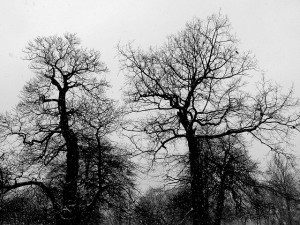
I’m lucky to live in an old urban neighborhood just half a block away from the biggest park in the city, where miles of woods and wetlands have been set aside for protection and preservation. Every week, I make sure to get out at least once for a long walk along the myriad winding hiking trails that criss-cross these forested hills. After a day sitting at a square, flat desk in front of a square, flat computer screen, the complex contours and textures of the woods is a sight for sore eyes. You can see it especially in the late autumn, when many of the trees have lost their leaves. The bare limbs weave an intricate web of light and shadow arching over the path while trunks stand like thin, limber dancers poised in graceful crowds on every side.
Many of us spend almost all of our time inside square-shaped buildings full of right angles and straight lines, staring at the flat surfaces of computers, televisions, office memos, books and so on. Even when we take a moment to glance longingly out the window for a glimpse of sunlight, the experience comes to us through the right-angled, flat surface of the windowpane. But when we have the chance to step out of our carefully constructed worlds, one of the most precious gifts nature can give us is the profound experience of depth. Along with height and width, depth is that third dimension that gives us room to breathe, move and explore. Depth invites us into exploration and investigation. It beckons us to reach out to touch the texture of rough bark or wrinkled leaves or soft snow. It challenges us to lean sideways to peer around bolders, to change our perspective, to step off of the linear path to discover what might be hidden around the next bend. Even our human-made environments seem blessed with a new sense of depth and texture when we return from our time outdoors.
4. Emptiness
Iguazu Falls, Brazil and Argentina – One of the largest waterfalls in the world, the 275 falls that collectively make up Iguazu Falls extend in a semi-circle for nearly two miles surrounded by a subtropical rainforest that is home to many rare and endangered species. The waterfall known as “Devil’s Throat” is the tallest of these falls, plunging more than two hundred and sixty feet into a vast, yawning canyon carved out by the Iguazu River.
On clear nights, I sometimes climb up onto the roof of my apartment building and spend an hour or two star-gazing. The city lights usually drown out all but the brightest of stars, though there’s no shortage of airplanes and cell phone satellites tracing out their slow-moving paths. Still, I sit for a while watching the night sky darken and the twinkling pinpricks of light emerge one by one out of the quiet emptiness of the universe beyond our atmosphere. I think back on the summer I went star-gazing on Mount Cadillac, the tallest mountain on the Eastern seaboard, and the night was so full of stars that for a moment I felt a rush of vertigo as the rocks themselves seemed to tip me into the vast space that stretched between me and those far distant suns.
Sometimes what nature can give us is nothing. There is a particular wonder within emptiness and space, a sacred absence that can give us a moment to pause for reflection. After a busy, noisy day full of other people and their demands, it can be real blessing to discover the silence and solitude of gazing into the wide open reaches of the sky to watch the clouds drift by or the stars come out. We find that even in a world so teeming with life, in many ways we are each alone with our own thoughts, unique individuals in a vast universe. The emptiness of the sky reflects the emptiness within us. Our very atoms are made up mostly of the space between electrons whirring madly about a tiny nucleus. Yet somehow, we exist even within this great emptiness, just as the emptiness exists within us, and that really is a wonder.
5. Death
Table Mountain, South Africa – Approximately two miles wide, this flat-topped mountain plateau supports an unusually rich diversity of flora, including the highest concentration of threatened plant species of anywhere in the world. The mountain’s natural cycle of seasonal wildfires helps to burn and rejuvenate the rare fynbos vegetation that grows on its exposed slopes.
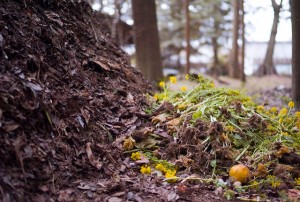
Now that the first frosts have long since claimed the early mornings, turning dew into crystalline jewels on the bent blades of grass in the backyard, I find myself missing the summer mornings I spent outside working in my herb garden and doing my best to weed the bed of scattered wildflowers along the old wooden fence. Now, the stems of these carefully loved and cultivated plants are brown and dark with rot, their old leaves hanging limply like abandoned husks. I should trim them back, adding their remains to the decaying heap of grass clippings, fallen leaves, egg shells and orange rinds in the compost bin before it freezes over for the winter. But I can’t bring myself to do it just yet. Though the seasons move through this cycle every year, there is always a grief that comes with the final, undeniable triumph of the winter months.
Yet nature teaches us that death is not an ending, but a necessary and beautiful part of life. Though it might be a bit gross-looking and full of fruit flies, in that very same compost heap worms, maggots and countless microorganisms are thriving, gorging themselves happily on the rotten organic matter that my human household considers to be waste. Through their work, what was once putrid refuse becomes the rich, dark soil that will nourish next year’s flowers, vegetables and herbs. Through the sacred and surprising relationships of the food chain and the processes of decomposition, nothing in the natural world is ever wasted. Even as we grieve the loss of life and the coming of the cold, dark time of the year, we can see in nature that without the process of disintegration and dissolution that death brings, the new life of spring would not be possible.
6. Persistence
Komodo National Park, Indonesia – This national park consists of three small islands that are the native home of the largest lizard in the world, the Komodo Dragon. It is now believed that the Komodo Dragon is a living relic of the ancient “megafauna” that mostly died out after the Pleistocene age. The park now serves as a protected nature preserve for many endangered species of plants and animals.
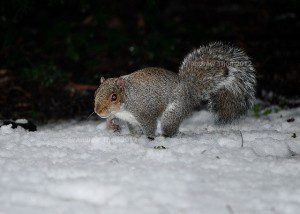
Every year as the nights grow colder and longer and the days become ever shorter and darker while the sun slinks lower along its path, I find myself wondering how the jays and squirrels in this urban neighborhood manage to survive through winter. The crows, on the other hand, are easy to spot, their black bodies showing up as angular silhouettes against snow-covered rooftops or low gray clouds as they cruise above the city skyline looking for restaurant dumpsters to pick over for scraps. Every once in a while out in the woods, I’ll catch a glimpse of a chipmunk rustling among old dead leaves, venturing out from the warmth and safety of its winter home in search of food. I wonder if these creatures long for warm weather again as much as I do, looking forward to that solstice sunrise and its promise of growing light and new buds on the trees again. I can’t help but marvel at the tenacity and ingenuity of life in all its many forms.
The natural process of evolution has ensured, over the course of billions of years, that the plants and animals best adapted to survival manage to pass on their genetic traits to future generations. But even evolution itself is a pretty amazing thing when you really stop to think about it. Just consider how life continues to survive and even thrive in spite of all of the challenges and obstacles, spreading in many diverse forms to even the harshest, most unforgiving ecosystems on the planet. Such persistence takes tremendous creativity and passion, and it gives rise to everything from the most complicated social structures of a beehive to the simplest beauty of a flower blossom. This persistence is not just about competition, either. Every day plants and animals in the natural world work together in symbiotic relationships that ensure their mutual survival as part of a shared ecosystem. Because of their interconnection and interdependence, life goes on.
7. Mystery
Puerto Princesa Subterranean River, Philippines – This 8.2-kilometer-long underground river winds through enormous caverns of stalagmites and stalactites carved out of limestone rock formations beneath a mountainous landscape before emptying directly into the South China Sea. It is reputed to be the longest subterranean river in the world, with much of its caverns and tributaries still unexplored.
My cat is at the window again, looking out on the world beyond the smudged pane of glass with sharp, intelligent eyes. Watching the intensity of his gaze, I can’t help but wonder what he must be thinking. Perhaps he isn’t thinking at all, but is instead lost in some profound meditation that any Zen master would envy. Still, there is a certain sense of mystery in his dark, still features.

What makes us self-aware, intelligent animals? A cat’s brain is only about .9% of its total body mass, though its shape and structure is in some ways very similar to a human brain. It seems unlikely that such a tiny organ could be capable of something as significant as self-awareness, let alone intelligence. And yet, there are times when I’m sure that I can see in my beloved pet’s eyes a depth of understanding and awareness that surpasses even some of my fellow human beings’. It’s as though the eyes were a window into some deeper soul or consciousness, of which the brain acts only like an anchor or a tether. I’m not alone in this experience, either. Many ecologists and researchers have shared similar stories about encountering animals in the wild, looking into eyes that held a startling intelligence and connection. Neuroscientists are still unable to explain the mystery of consciousness or pinpoint exactly why the electrical firings of neurons in the brain can give rise to everything from memory and dreams to art and imagination, from love to logic, and even scientific analysis itself. Despite everything we’ve been able to learn about the natural world and its physical properties, some things still remain a mystery.
The world is far grander and more complex than we know, and holds within it the great adventure of mystery calling us into engaged relationship with the wonders of the universe.


